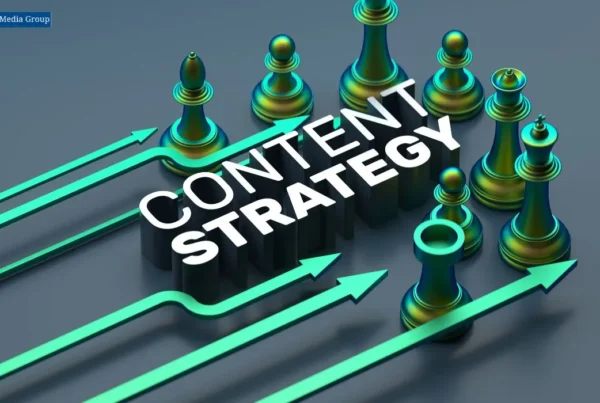In today’s digital landscape, businesses are constantly seeking ways to enhance user engagement and create personalized experiences for their audience. One powerful technique that has gained significant traction is dynamic content personalization. By tailoring content based on user preferences, behavior, and demographics, businesses can deliver highly relevant and engaging experiences that resonate with their audience.
Benefits of Dynamic Content Personalization
The benefits of implementing dynamic content personalization are vast. By serving customized content, businesses can increase user engagement, improve conversion rates, and foster stronger customer relationships. Personalized content helps create a sense of individual attention, making users feel valued and understood. It enhances user experience, drives customer loyalty, and ultimately contributes to business growth.
Understanding Your Target Audience
To effectively implement dynamic content personalization, it’s crucial to have a deep understanding of your target audience. Analyze user data, conduct market research, and create buyer personas to gain insights into their preferences, pain points, and behaviors. By understanding your audience, you can develop content strategies that align with their needs and deliver personalized experiences.
 Creating a Content Strategy for Dynamic Personalization
Creating a Content Strategy for Dynamic Personalization
Crafting a content strategy tailored to dynamic personalization involves several key steps. Start by mapping out user journeys and identifying touchpoints where personalized content can be delivered. Leverage data analytics and segmentation techniques to group users based on common characteristics. Develop content variations that cater to these segments, ensuring relevance and effectiveness.
Types of Dynamic Content Personalization
There are various approaches to dynamic content personalization. Some common strategies include:
- Product Recommendations: Displaying personalized product recommendations based on user browsing history, purchase behavior, or similar user preferences.
- Geolocation Targeting: Delivering location-specific content or offers based on a user’s geographical location.
- Behavioral Triggers: Triggering specific content based on user actions, such as displaying a discount popup after a user spends a certain amount of time on a product page.
- Dynamic Email Campaigns: Tailoring email content based on user preferences, past interactions, or lifecycle stage.
Overcoming Challenges in Dynamic Content Personalization
Implementing dynamic content personalization may come with challenges. It requires robust data management, integration of personalization tools, and continuous optimization. Ensuring data privacy and compliance with regulations is also vital. However, with proper planning, data-driven insights, and the right technology stack, these challenges can be effectively addressed, enabling businesses to reap the rewards of personalized experiences.
FAQs
How can I understand my target audience better?
Understanding your target audience involves thorough market research, analyzing user data, and creating detailed buyer personas. By gaining insights into their preferences, pain points, and behaviors, you can tailor your content to effectively engage and resonate with them.
What are the different types of dynamic personalization?
There are several types of dynamic personalization techniques, including product recommendations, geolocation targeting, behavioral triggers, and dynamic email campaigns. Each method serves to deliver personalized content based on user preferences, behavior, or location.
What tools and technologies can I use for dynamic personalization?
Numerous tools and technologies are available for dynamic personalization, such as customer data platforms (CDPs), marketing automation platforms, content management systems (CMS), and personalization engines. Choose the ones that align with your business needs and integrate seamlessly into your existing infrastructure.
How can I measure the effectiveness of dynamic personalization?
Measuring the effectiveness of dynamic personalization involves tracking key metrics like user engagement, conversion rates, click-through rates, and time spent on personalized content. Utilize analytics tools and A/B testing to evaluate the impact of personalization efforts and make data-driven optimizations.
 What are the challenges in implementing dynamic content personalization?
What are the challenges in implementing dynamic content personalization?
Implementing dynamic content personalization can present challenges such as data management, integration complexities, privacy concerns, and ensuring compliance with regulations. However, with proper planning, robust technology solutions, and adherence to best practices, these challenges can be overcome.
Can dynamic personalization compromise user privacy?
Respecting user privacy is paramount in dynamic personalization. Implement privacy-conscious data collection practices, adhere to relevant privacy regulations, and offer transparent opt-in/opt-out mechanisms. Prioritize data security and establish trust with your audience.
Are there any industry-specific examples of successful dynamic personalization?
Dynamic content personalization has found success in various industries. For instance, e-commerce platforms leverage personalized product recommendations, while news websites deliver tailored content based on user interests. Look for industry-specific case studies and examples to gain insights and inspiration.
What are the future trends in dynamic content personalization?
The future of dynamic content personalization holds exciting possibilities. AI and machine learning advancements, augmented reality (AR), and personalized voice experiences are emerging trends that will further enhance the level of personalization businesses can achieve. Stay informed and explore innovative technologies to stay ahead in the personalization game.
Conclusion
Dynamic content personalization empowers businesses to create tailored experiences that captivate their audience. By understanding your target audience, developing a content strategy, and utilizing various personalization techniques, you can elevate user engagement, drive conversions, and foster long-term customer loyalty. Embrace the power of dynamic content personalization to unlock the true potential of personalized digital experiences.




